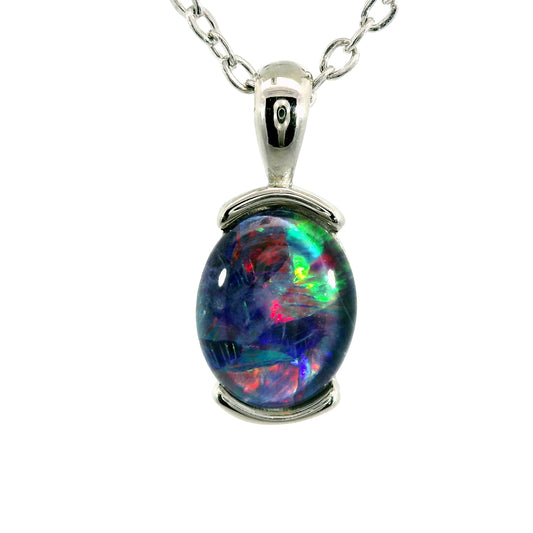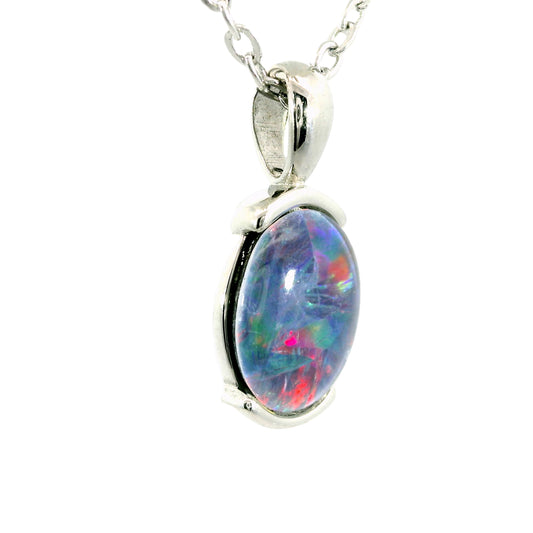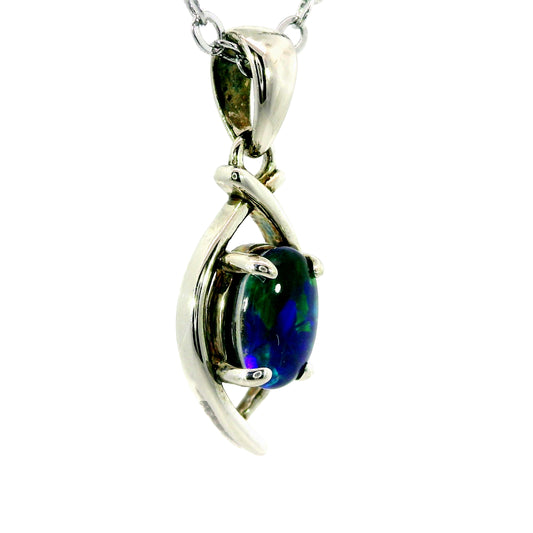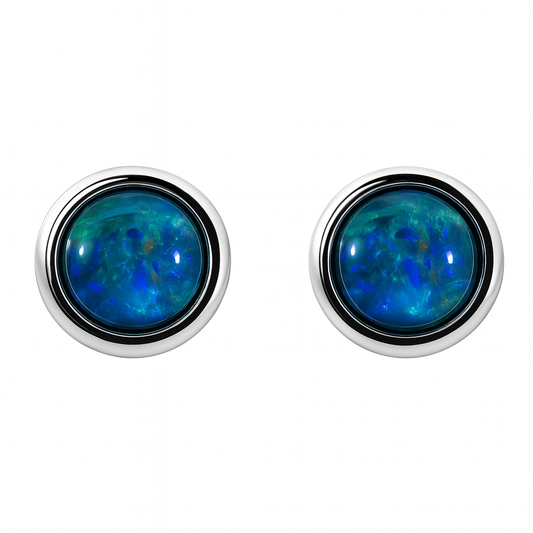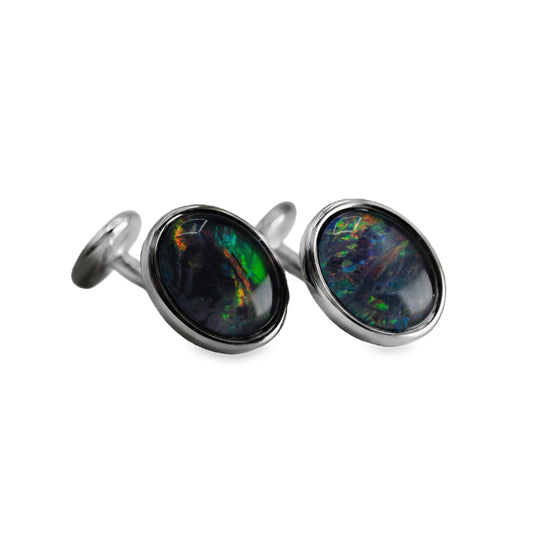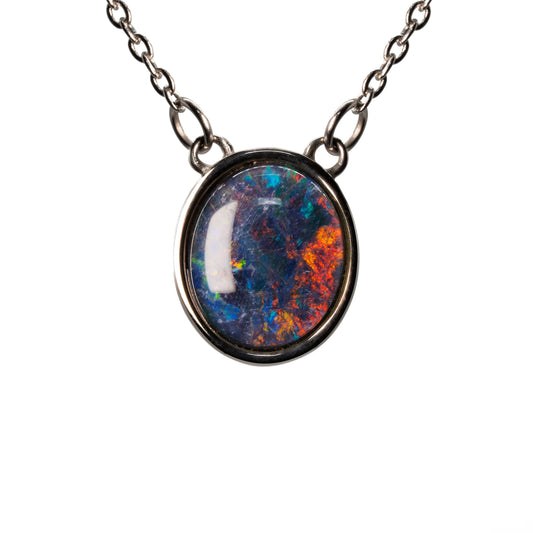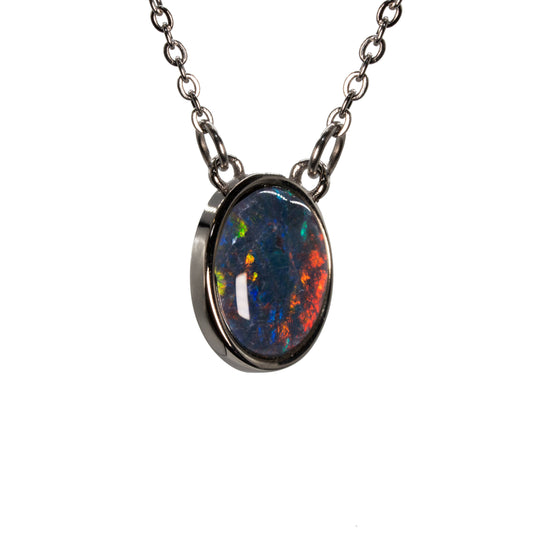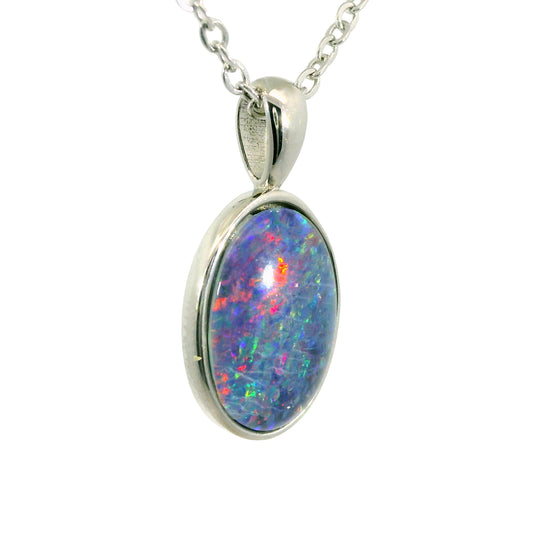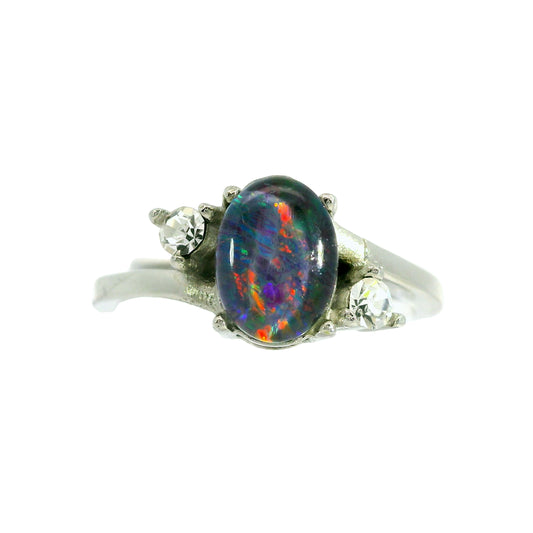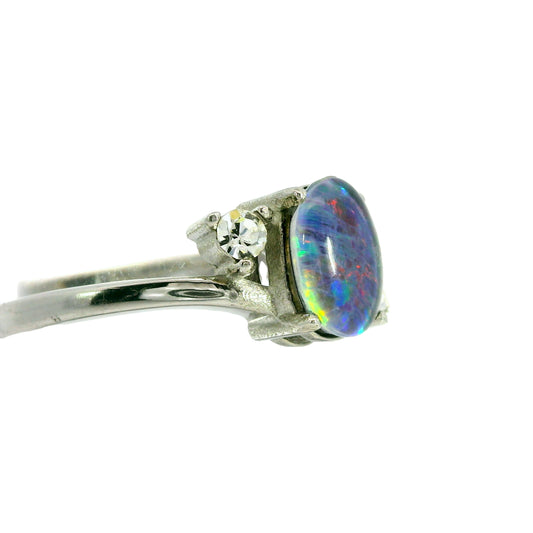Opal Brightness - The Hidden Factor You Need to Know
There are many factors one must consider when looking at an opal stone or bespoke piece of opal jewellery. Because each opal is a unique and truly unrepeatable stone, determining each piece's value is not easy, and an opal lover may find the evaluation process quite hard. The most important characteristic of an opal is often overlooked by an untrained eye: brightness.
Why Does Opal Brightness Matter?
Brightness, in its most basic terms, is a label given to the visual perception of ‘reflecting light’; brightness as a concept is, by definition, a perception. What is perceived as ‘brightness’ can be influenced by the surrounding environment, making it - by definition - not linear to luminance. As a concept, brightness can be quite subjective, with the only ‘concrete’ definition referring to “how much light appears to shine from something”; this directly correlates to the world of opal, as many jewellers classify brightness based on visual cues and personal opinion.
In recent years, the term ‘brightness’ has been used as a synonym for the term ‘luminance’, in addition to the (incorrect) usage of ‘radiance’. As defined by the US Federal Glossary of Telecommunication Terms, the term ‘brightness’ should be used only for perceptions of light, in addition to ‘physiological sensations’.
Opals act as a prism of sorts; when light passes through the surface it diffracts, splitting the white light into various colours on the spectrum. This light will eventually ‘bounce’, becoming the colours that can be seen when observing the stone. The brightness and vivid nature of an opal is a key factor that, when analysed, will help determine the value of an opal. A bright opal, regardless of size, will often have a higher value than an opal that is pale.

The Opal Brightness Scale
There is currently a scale used by various jewellers that gives insight into what ‘level’ a gemstone sits at and will overall allow for a better understanding of the item’s value.

B7 [Very weak] - The opal shows hints of colour only in sunlight.
B6 [Weak] - The opal shows a weak play of colours both under the sunlight and the artificial light of the lamps.
B5 [Not very bright] - The opal shows a certain play of colours both under the sunlight and the artificial light of the lamps.
B4 [Bright] - The opal shows a beautiful play of colours both under sunlight and artificial light. It does not show any colour when shaded away from light.
B3 [Very bright] - The opal shows a nice play of colours under a weak artificial light and a very good one under the sun's rays. If put in the shade you can see the colors.
B2 [Brilliant] - The opal has an intense play of colours both under artificial and solar light and remains very bright when seen in dim light.
B1 [Exceptionally Brilliant] - The opal has a vivid play of colours and electric reflections in any light and is even brighter when seen in the dim light.

Guide to Body Tone
The ‘Opal Association of Australia’ created the ‘Opal Body Tone Guide’ as a way to categorise and correctly assess black and boulder opal. Many jewellers, including the expert team at Australian Opal Cutters, utilise this tone chart. The term ‘body tone’ (which has also been referred to as base tone, or background tone) is the name given to the ‘darkness’ within an opal's background, which often will allow for contrast within the opal's colours. Usually, a stone is assessed face-up and cross-referenced against a ‘tone chart’. Within this process, the colours will be ‘ignored’, with a jeweller instead focusing on if the stone is jetblack (N1) or transparent (N9).

Body Tone N1 - N4 is for black toned opals. Body Tone N5 - N7 is for light coloured opals. Although these opals are usually mined at Lightning Ridge, this chart has been used on opals found at Coober Pedy and Ethiopia. Overall, this chart is a simple way of determining the body tone, which can then be used in the opal evaluation.












































































































